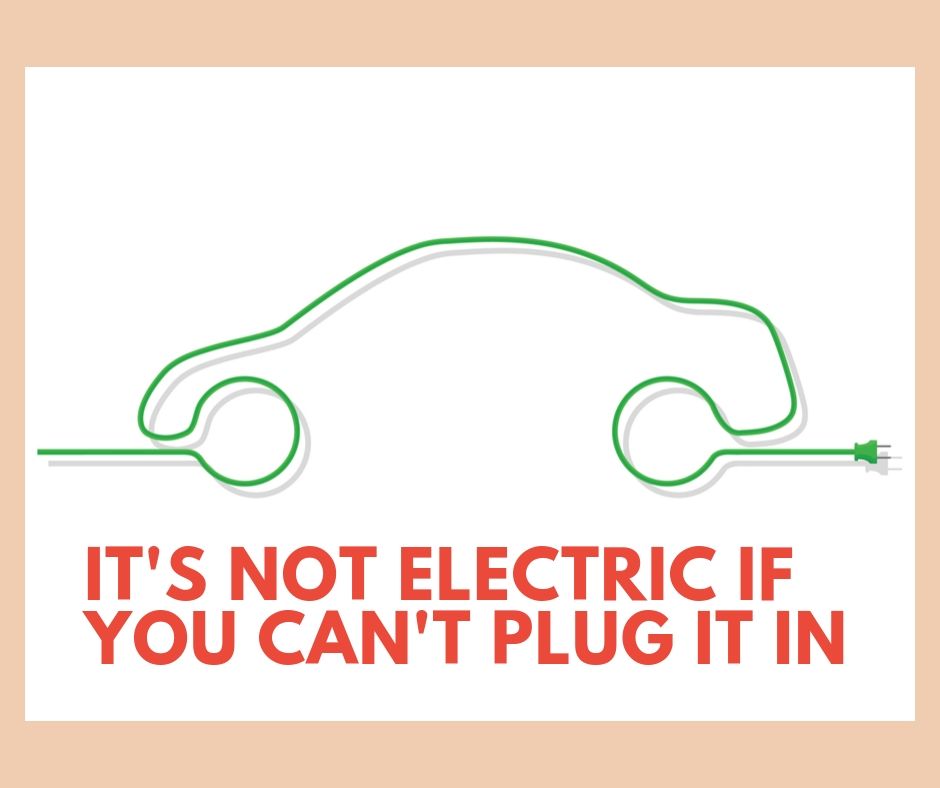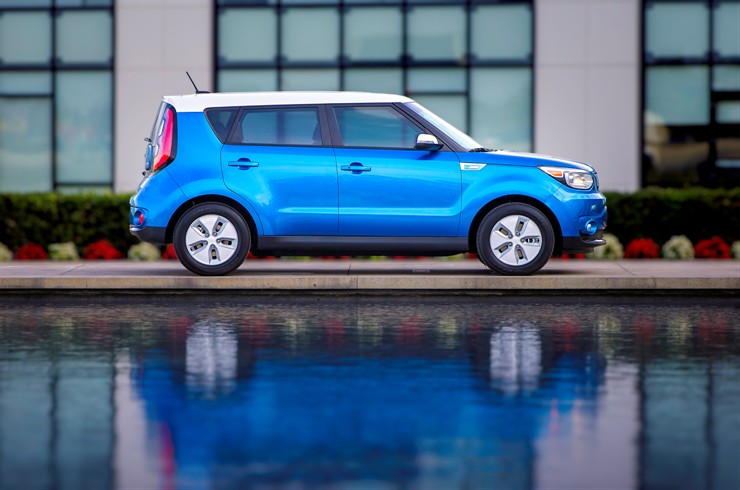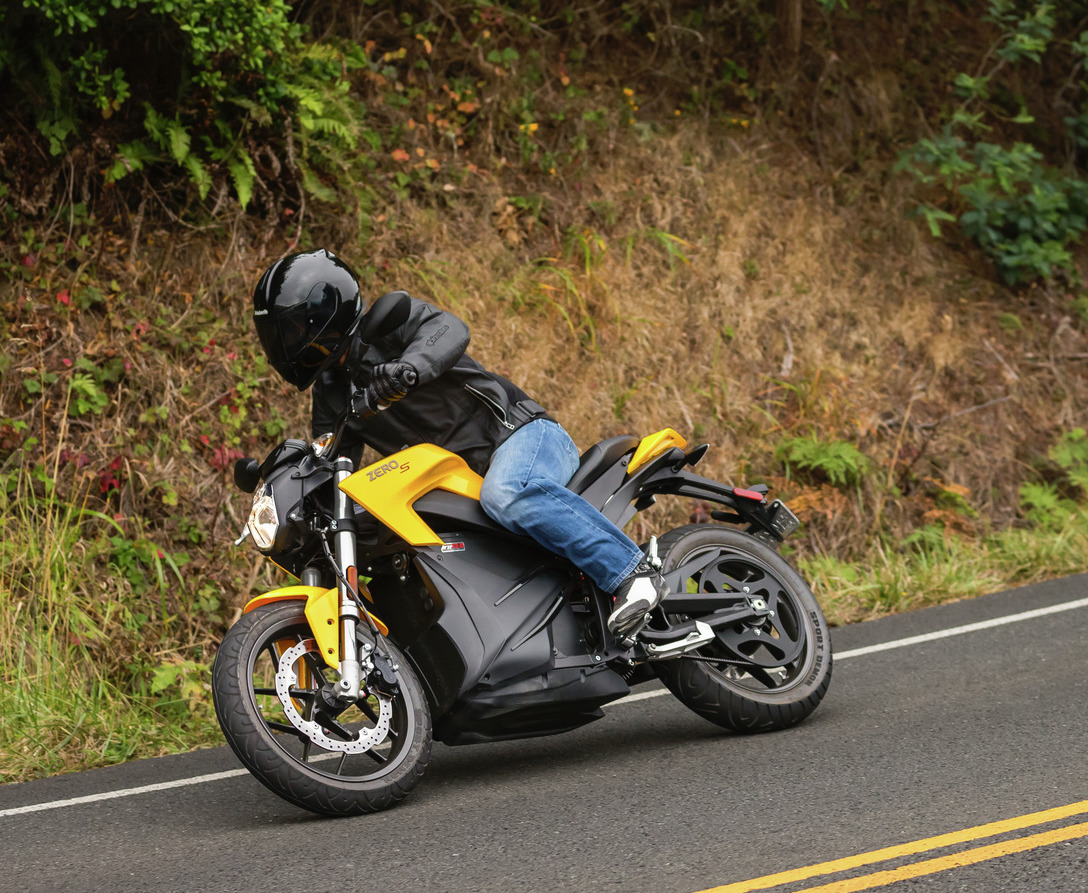Last Update: October 8, 2019

A few years later, in 1998, I bought a copy of the book Convert It, a guide on converting gasoline cars to be electric cars. My roommate's VW Rabbit project was right out of that book, and that book turned on a light in my mind. I got electric vehicles in a big way because I now had the context to understand their value.
Let's start with the most common misconception: A hybrid electric car is not an electric car, despite the word "electric" being there.
Some think that because a hybrid car (e.g. Toyota Prius) has an electric motor it is electric. But we'll see in a moment, a hybrid car is not an electric car.
If an electric vehicle is powered by electricity, and a hybrid vehicle is not electric, let's break the phrase apart to see what this actually means:
- Electric means electricity, of course
- Vehicle means a car, truck, motorcycle, bus, airplane, etc
Therefore we are talking about a car, truck, motorcycle, bus, airplane, etc powered by electricity. In an electric vehicle, some or all of the motive power must come from via electricity from the electric grid. Burning gasoline to make electricity does not count.
- In a gasoline or diesel or other liquid fuel, the motive power comes from burning the liquid fuel.
- In an electric vehicle the motive power is electricity.
- In a traditional hybrid vehicle every unit of energy to drive the vehicle derives from burning gasoline.
It's not electric unless you can plug it in - Hybrid electric vehicles
As we used to say about hybrid cars like the Toyota Prius: It's not electric unless you can plug it in
In most hybrid cars the electric motor is used at low speed. The gas engine kicks in above 30 miles/hr or so, or after 1/2 a mile or so when the battery charge runs too low. The gas engine serves two purposes:
- Driving the car at high speed
- Keeping the small battery pack fully charged
This design is what's called a parallel hybrid. These are driven by both an electric motor and a gasoline engine, and both modes of motive force are used to drive the wheels. These cars are 100% powered by gasoline.
In theory there is another design - the series hybrid. In this case the gas engine is solely used to generate electricity to charge the battery pack. The electric motor is solely used to drive the wheels. If the battery pack is only charged from the gas engine, the car is still 100% powered by gasoline.
Hybrid cars are desired over pure gasoline/diesel cars for their fuel efficiency. The design blends electric and gasoline drive modes so that the car uses less gasoline than a straight-up gas car.
Because a hybrid car is 100% powered by gasoline, it is a gas car whose efficiency is amplified by electricity.
Fuel cell vehicles
Fuel cell vehicles are desirable because they do not require gasoline. However they cannot be called electric vehicles because the motive power does not come by plugging in to the electricity system.
Fuel cell vehicles have an electric motor and a small battery pack. These cars use the series hybrid design where the fuel cell keeps the battery pack charged, and the battery pack powers an electric motor.
None of the fuel cell vehicles allow the battery pack to be recharged from the electricity grid. That means fuel cell cars are 100% powered by hydrogen.
Vehicles you can plug in -- electric and plug-in hybrid electric vehicles
An electric vehicle is one you can plug in? What that means is the vehicle has a battery pack big enough to drive the vehicle for a significant distance, and it can be plugged in to the electricity grid to recharge. The significant difference is the energy to drive the vehicle is not derived from gasoline, or hydrogen, but from the electricity system.
You of course do not refuel the battery pack at a gasoline station, but from an electric power outlet. Specifically an electric vehicle charging station is used since electric cars require specifically designed charging cords. Why is a special cord required? Even though electric vehicle charging cords carry regular old electricity, the powers that be recognized safety features were required to avoid electrocution and other dangers.
There are two kinds of electric vehicles:
- Plug-in Hybrid: These have a gasoline engine like a Hybrid, and can plug in to a charging station to recharge a battery pack. Some Plug-in Hybrids (PHEV's) use the series hybrid design pattern.
- All Electric or Battery Electric: These have no gasoline or diesel engine, and are powered solely by energy stored in a battery pack.
It's not just electric cars
We've said hybrid car, plug-in hybrid car and electric car but we've also said electric vehicle. We need to be clear that electric vehicles come in all sizes, including electric airplanes.








